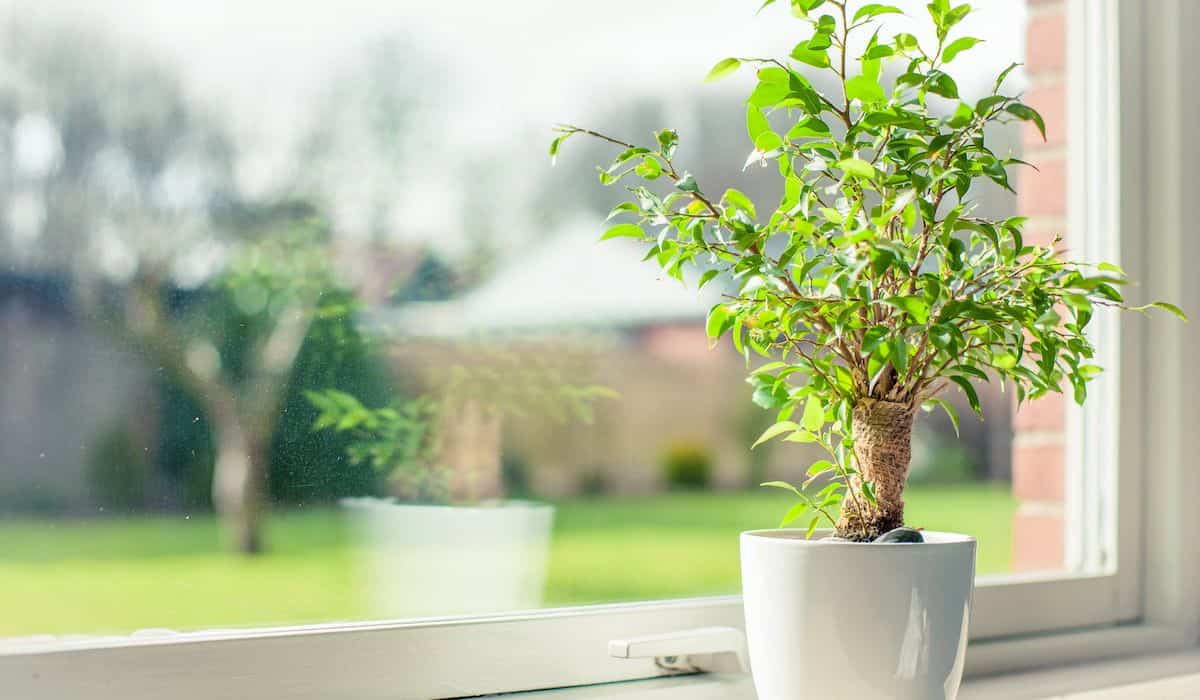Nature is inarguably what makes this planet so beautiful – the greenery, myriad colors and sounds, and fresh air. Houseplant care as a hobby is perfect for you if you are a plant-lover. Plants make both peaceful, low-maintenance companions, and incomparable décor.
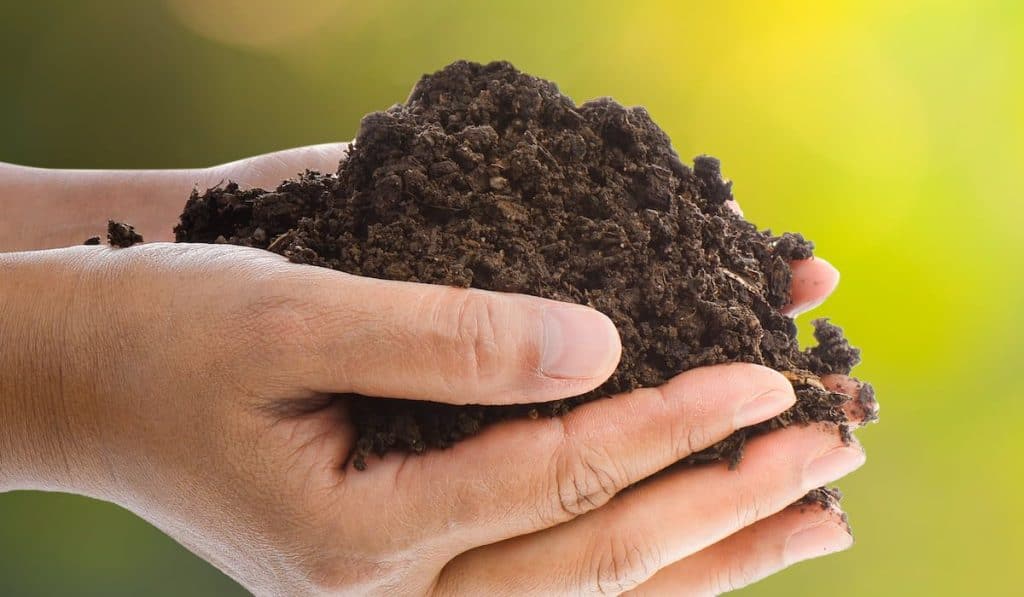
What Sort of Soil Should You Use?
The most important thing to remember about your houseplants’ soil is that it is well-draining. This is because soil that drains poorly will allow the roots to soak, ultimately causing root rot – a dangerous plant killer.
Even moisture-loving plants must drain well, so they aren’t soggy. This can be accomplished by creating a custom mix of potting soil and perlite, peat, or sand.
Why? These mediums greatly enhance filtration, as they don’t hold onto much water.
The result is soil that will drain dependably. This will help eliminate the risk of root rot, so you can rest easier.
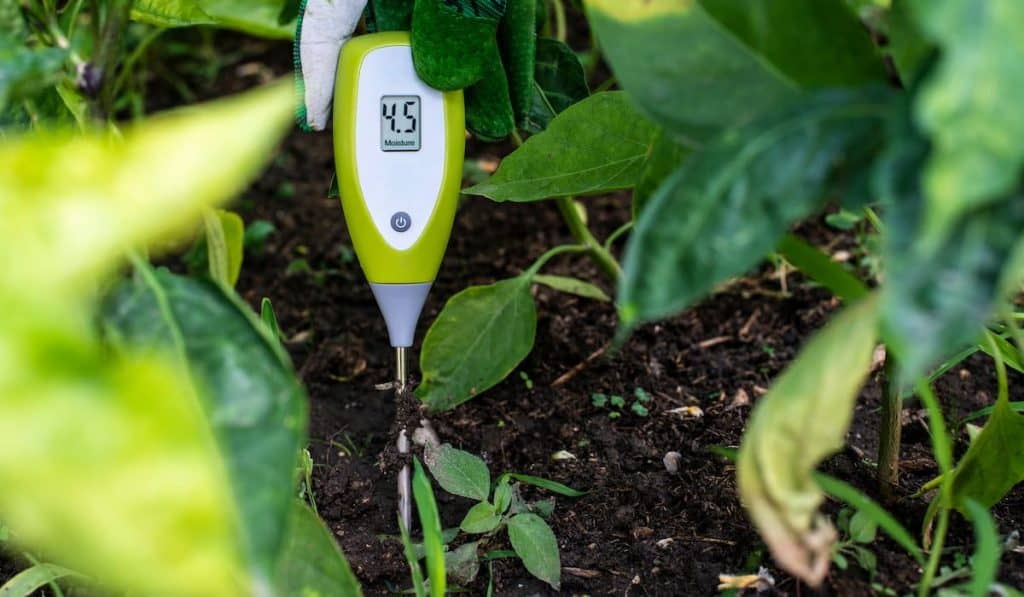
What is Plant pH and Why Does it Matter?
Plant pH represents how alkaline or acidic the levels are in certain soil.
Fortunately, many plants aren’t too picky about pH, but there are plants that are much more particular, and will require a certain level in order to survive.
We found a great article over at Gardeniaorganic.com for testing the pH levels in the soil to improve the growth of your plants.
This is certainly something you will want to look into (a quick online search will do).
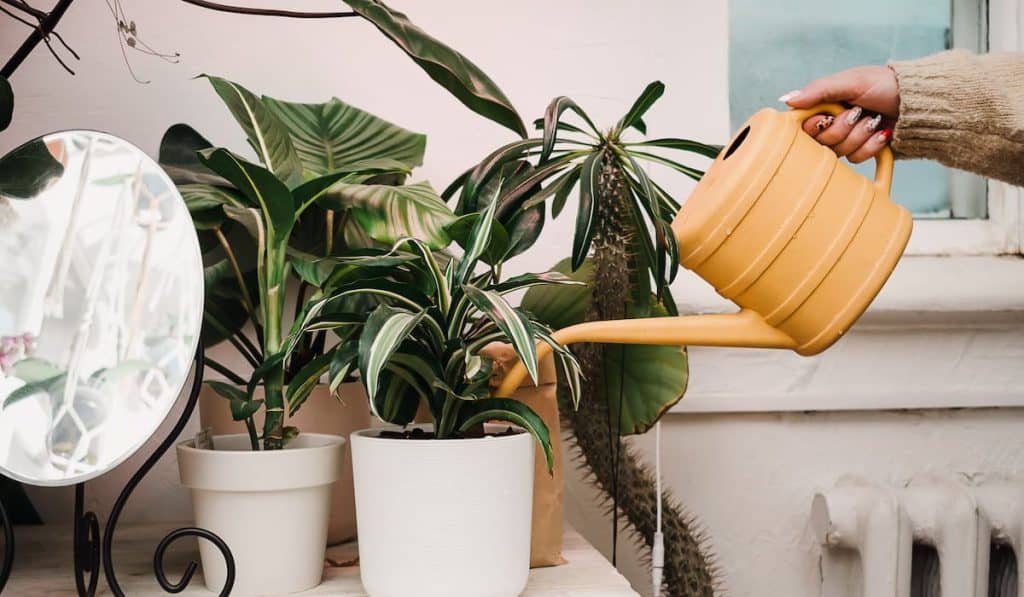
How Do You Water Plants Properly
Believe it or not, watering can be a big plant killer. This is because people kill their plants with kindness when they accidentally over-water.
It may seem like a plant should always have plenty of water. Actually, if a plant is soaking wet all of the time, it creates the perfect conditions for a truly deadly disease, called root rot.
Many plants don’t survive root rot, and drastic measures must often be taken to salvage a plant from the disease (surgery, repotting, fungicide, etc.).
While plants have varying preferences when it comes to watering, a good general rule is to allow the soil to dry mostly or completely before you water.
This will help ensure that no root rot is allowed to develop. You can see how dry the soil really is by poking a finger about ½ inch into it; if it’s damp, the plant is probably still OK. It will probably need a good watering if it’s dry, however.
Cacti and succulents are drought-survivors and live on relatively little water.
Tropical plants, on the other hand, like African Violets, rely on moisture. They may even need misting or a humidifier.
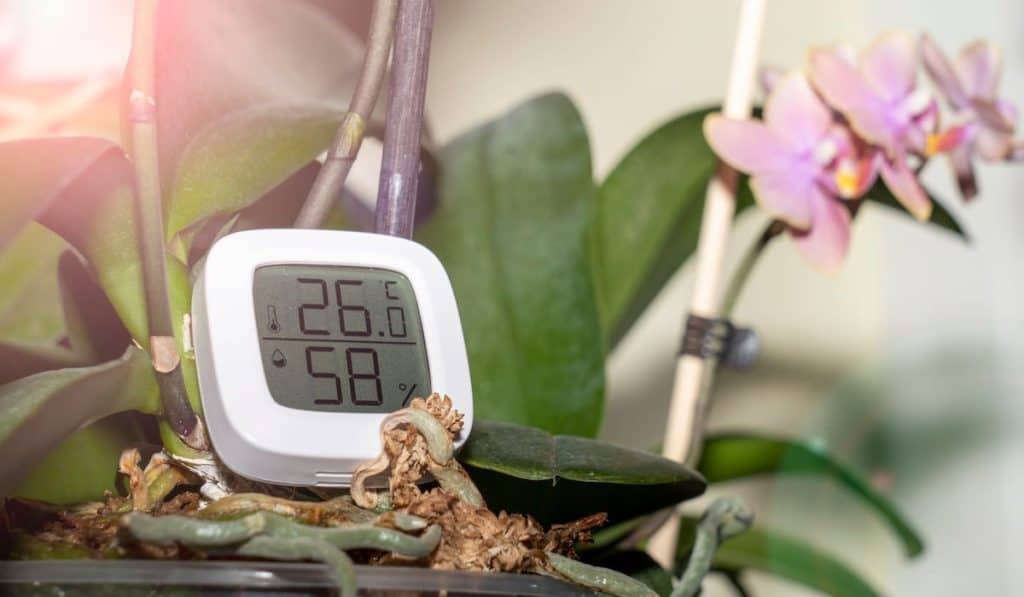
What is a Hardiness Zone?
The climate that plants require is called a ‘hardiness zone.’ These go anywhere from 9-12, with hardiness zone 9 being colder and zone 12, warmer.
Some plants, like tropical ones, are unable to survive outside in a hardiness zone that falls below 10.
This is a quick and easy way to see what plants you will need to grow indoors, as well as what can thrive outdoors.
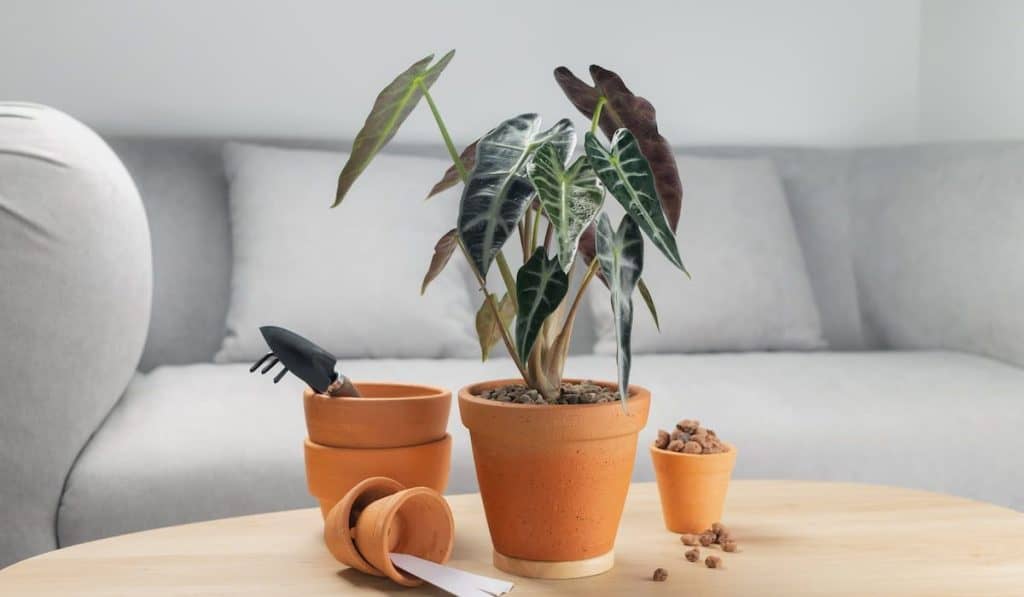
What’s the Best Pot Size?
A common question about houseplant care is what pot size to use. If a pot is too big, it can hold too much water, making root rot a risk.
A too-small pot, on the other hand, won’t leave the roots or the foliage any room to expand and grow!
Ideally, you’ll want a pot where about 1-1 and ½ inches of soil is left bare (leaving a nice amount of space for the roots that are below).
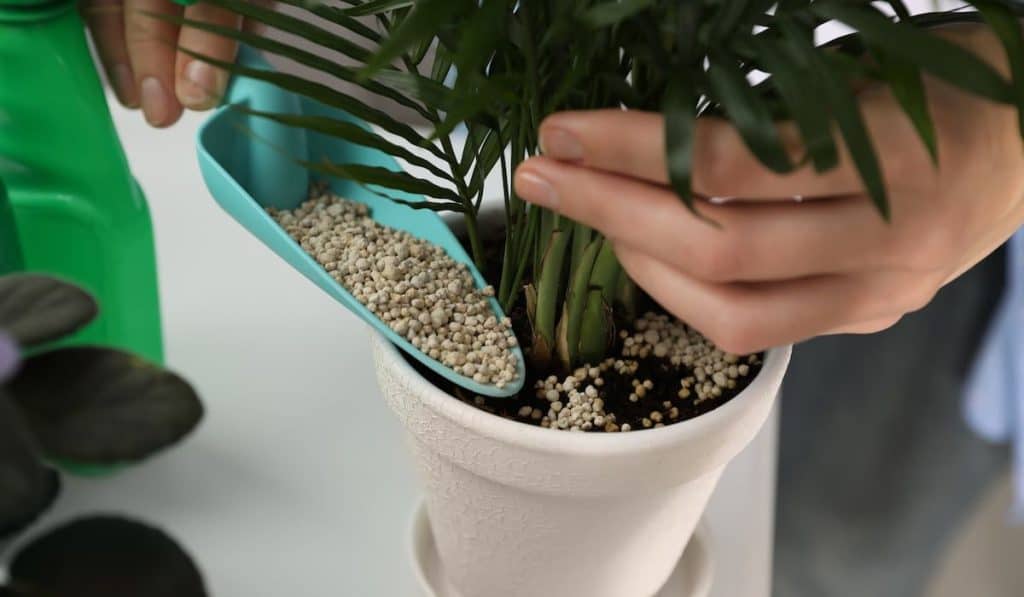
Growing VS Dormant Season
Did you know that plants have a growing season and a dormant season? They have different requirements at different times of the year.
In their growing season, plants require the most fertilizer, sunlight, and water. This usually takes place from late winter to autumn, with the dormant season taking over for the winter.
For some plants, the opposite is the case, with their dormant season taking place from spring-summer.
When plants become more dormant, they require less water and little to no fertilizer.
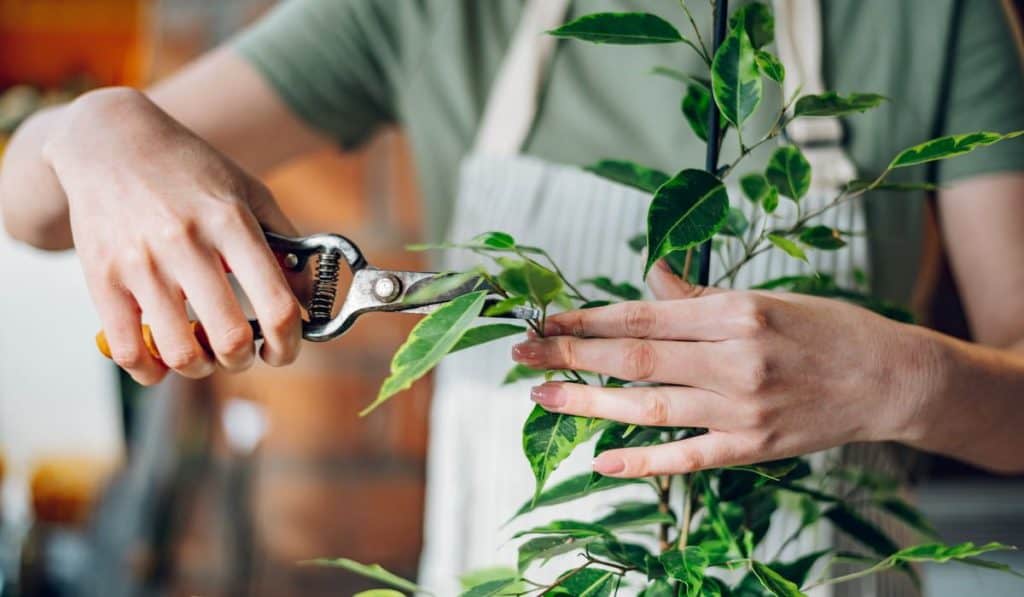
How Do You Prune Your Plants?
When it comes to houseplant care, pruning is used to either encourage growth or hinder it, as well as to remove tissue that is sick or dying off.
It’s important to get rid of sick or dying tissue right away so that it does not spread to the entire plant/waste the plant’s energy (as the plant tries to revive the weakened limbs).
If you’d like to help a plant grow, you will want to prune it during its growing season, when it’s easier for the plant to grow back!
To stimulate growth, trim off leaves here and there along each stem, and even one or two stems entirely.
Why does this work? Because this spares up the energy the plant spent sustaining those leaves so that it can grow more that are nice and new.
To cut back on growth, you will also want to prune during the growing season, but you can wait until a little later in the year.
Cut significantly more leaves and stems than you would in order to stimulate growth, and also cut any stems down further.
It’s also recommended to prune flowers as soon as they’ve died off.
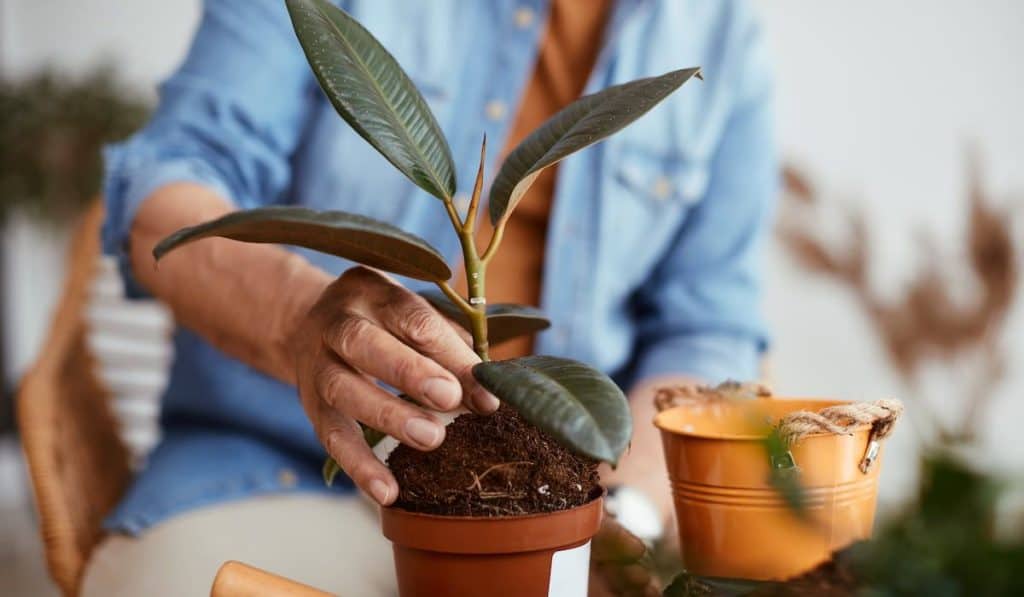
How and When Should You Repot Your Plants?
So, when should you repot your plants? How can you tell it’s time? There are a couple of ways!
First off, take a look at the bottom of the plant pot (which should always be perforated). Can you see roots poking out? Then your plant is about ready to pop, and ready for a new pot ASAP. Or, is the foliage starting to press against the sides? Another sign that repotting is called for.
Plants typically require repotting every 2-3 years, to a pot that is roughly 1 inch bigger. You will also need to repot any offsets that your plant drops.
In the unfortunate case of root rot, the plant must be treated with fungicide and repotted in a clean pot with fresh soil.
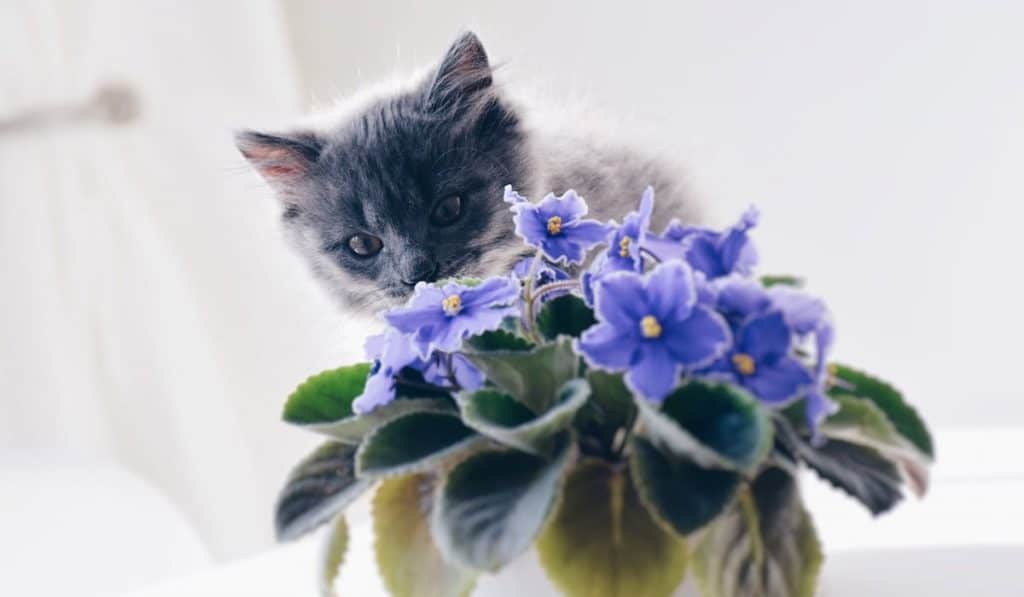
Is a Given Plant Toxic?
It’s absolutely vital that you learn the toxicity of every plant you own. Why? Because some plants are incredibly poisonous, with symptoms ranging from rashes and vomiting to the splitting or red blood cells and failure of the liver.
Avoid these risks simply by opting for non-toxic plants (or at least non-deadly). The African Violet, for example, is non-toxic, and pet and human safe.
The Peace Lily, on the other hand, is extremely deadly, especially for small pets like rabbits and cats. It’s quick to shut down the liver.
It’s not a well-known fact, but Lucky Bamboo Plants are also extremely toxic, as they are actually part of the lily family.
Keep your toxic plants well out of reach of animals and children, and place harmless plants like basil – a harmless, fragrant herb – more freely.
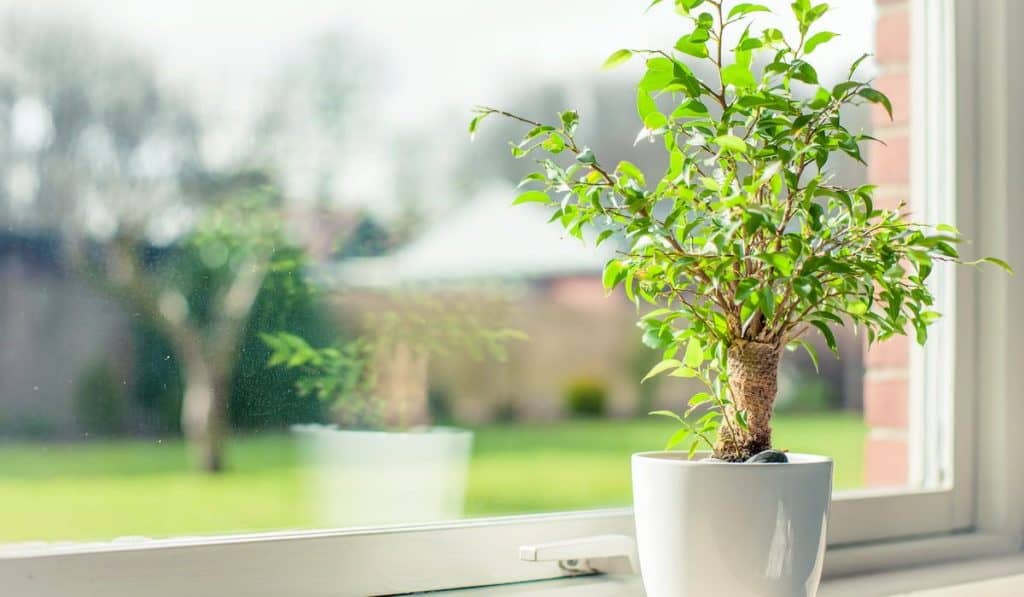
What Kind of Lighting Do Plants Require?
Houseplants have a variety of lighting preferences, but it’s safe to assume even a shade-loving plant wouldn’t thrive in a dark corner.
Outdoors, plants in the shade still receive plenty of reflected sunlight from all directions; indoors, their primary light source is the nearest window (and to a lesser extent, the reflection on the walls in rooms with a window or two).
Few plants can withstand being placed directly in a windowsill, as the surface can heat up considerably. This can cause sunscald (a plant sunburn), wilting, and more.
Instead, place your houseplants at least a couple of feet from the windows, with the shade-loving plants further back (but still in bright enough light to cast a shadow) and the sun-lovers closer.
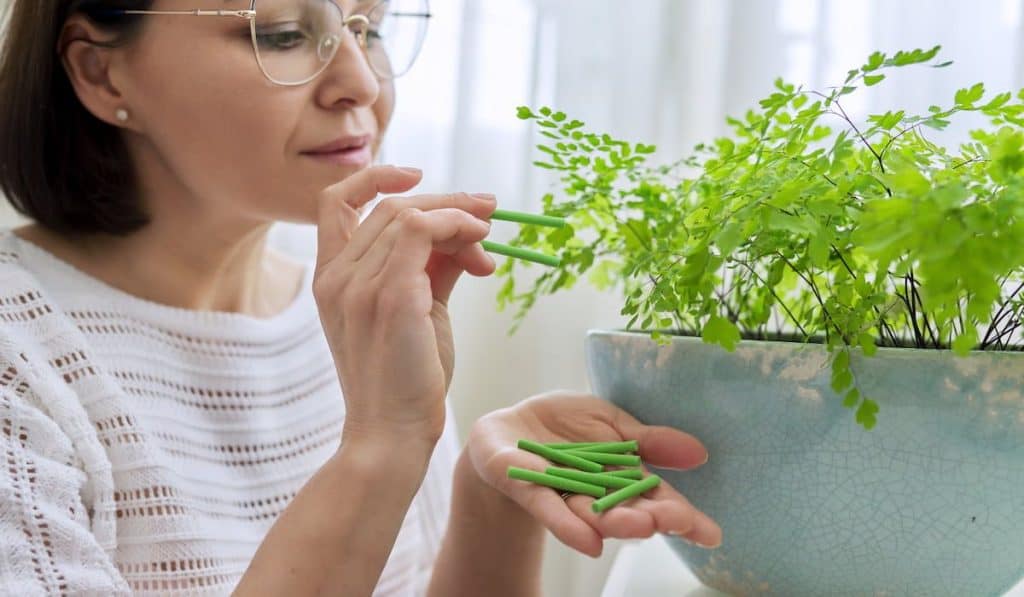
How Should You Fertilize Your Houseplants?
An aspect of houseplant care that’s often neglected is the necessity for fertilizer. Outdoors, plants receive sustenance from deteriorating leaves, dead bugs, and fecal matter.
Indoors, a bit of plant food will do the trick! Fertilizing your plants will help them to grow, and even encourage them to flower.
Most plants require fertilizing every few months or so, while some appreciate it as much as once a month. This being said, plants don’t require any fertilizer at all in the winter.
After repotting, hold off feeding your plants for roughly a month, or else the torn roots can get burned by the fertilizer.
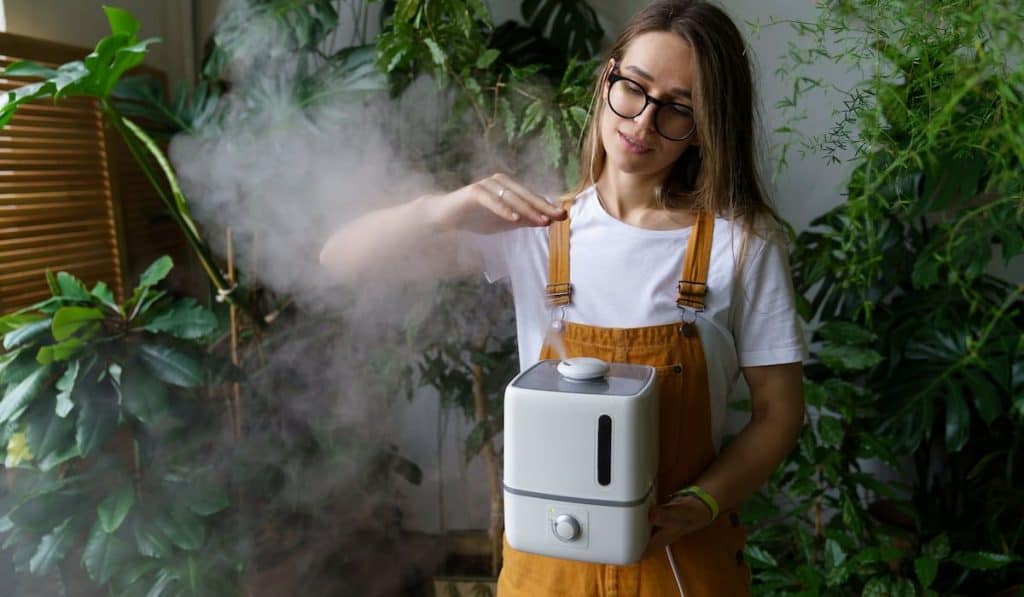
What Temperature and Humidity Do Houseplants Require?
When it comes to keeping healthy and long-lived plants, the proper temperature and humidity are key!
Unfortunately, you can’t always depend on your indoor environment to provide the proper conditions for your plants. Many plant owners must take measures to increase the temperature and humidity accordingly.
If it’s not humid enough for a plant – say a tropical plant – you may need to buy or make a pebble and water tray. This can be placed beneath a perforated plant pot, to slowly release water and increase the humidity.
If this doesn’t seem to be enough, it’s recommended to invest in an affordable humidifier.
Finally, humidity-loving plants can be kept in a bathroom where people frequently shower.
Alternatively, if it’s too humid, you can use a dehumidifier.
As far as temperature goes, the thermostat is your friend. Simply keep it from dropping below a comfortable 60F or exceeding, say, 90-100F (depending on the plant).
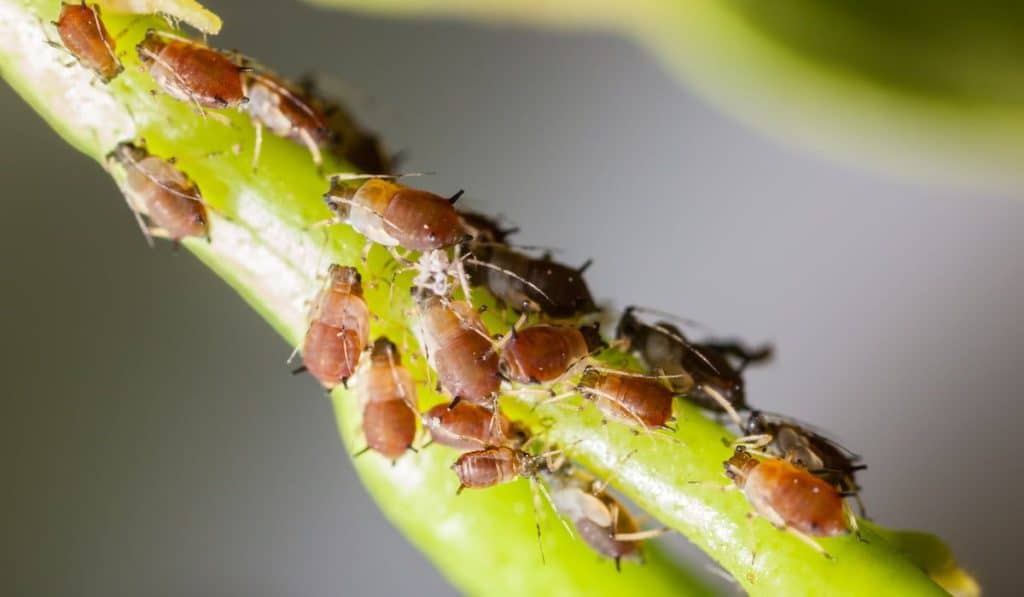
What Are Some Pests You Should Keep an Eye Out For?
While unhealthy plants are the most vulnerable to pests, perfectly healthy plants are also at-risk, with many of these nuisance bugs having a taste for sap. The most common pests are:
- Whiteflies. These look like tiny moths and leave behind a substance that resembles brown or black tar. They drink the sap, and this causes the plants’ leaves to become yellow and fall off. Load up a spray bottle with a gentle detergent and water mixture or neem oil, and spray the clusters of whiteflies thoroughly. This should do the trick!
- Spider mites. This pest is even tinier, and similar in shape to a spider. To the naked eye, they show up as silver specks, and in the corners of leaves, minuscule cobwebs are also sure to appear. For sensitive plants, a 1 to 3 solution of alcohol and water is recommended, and a ratio of 1 to 1 for plants that are tougher.
- Thrips. Thrips are so small that you can’t usually make them out with the naked eye; instead, you will notice them as see-through, winged bugs attached along the veins on the undersides of leaves, all bunched up together. These little devils can be forcefully sprayed off of plants with water, plant-safe insecticide, or neem oil (isopropyl rubbing alcohol can also work fine).
- Aphids. Unlike thrips, which attach to leaves, aphids tend to prefer to get their sap directly from the stems – so this is where you can most often see them occur. They are not much larger than a poppyseed and are green, plump bugs that are infamously greedy for sap. Where there are aphids, there is sure to be ‘honeydew.’ This is a sticky byproduct that aphids leave behind. Outdoors, aphid infestations can cause cars and patios to be rained on and covered in this sap (which can be wickedly hard to remove). Because aphids are a bit larger compared to some of the pests on this list, it’s possible to simply spray them off of a plant with water. If the infestation is particularly bad, a powerful spray-down with rubbing alcohol should also do the trick (just make sure your plant can withstand this).
- Scale insects. If your plant has acquired scale-like bumps anywhere, it’s almost certainly due to scale insects. These unique-looking bugs can become a houseplant-wise infestation if you don’t get rid of them straight away. Fortunately, the method couldn’t be easier. All that you need is a soft toothbrush (so it doesn’t scratch the plant) or a q-tip and isopropyl rubbing alcohol to carefully scrape them off.
- Mealybugs. These are small, oval, brown bugs that leave behind a waxy, cotton-like fluff. They can be gotten rid of most effectively with a potent combination of isopropyl rubbing alcohol, and gentle dish soap (such as Dawn). Use a swab to remove the bugs directly, or spray the entire plant off.
How Do You Propagate Your Plants Yourself?
You can propagate your plants, which entails creating more plants from them asexually. This can be accomplished with a few techniques, which include cuttings, separation, and seeds, primarily.
Cuttings
How to take a cutting depends on the plant in question. For example, for Devil’s Ivy, you will want to cut the plant just below one of the distinctive bumps along the stem. This will stimulate roots to grow from the bump, called a node.
With African Violets, you cut a healthy leaf off about ¾ down the stem and then cut the leaf itself in half.
This will prevent energy from being wasted trying to get the leaf itself to grow, so roots can form more quickly.
Let it callous for a day or two, and then plant it about ½-1 inch deep. Soon, roots will form, and new baby leaves will appear.
Seeds
While seeds are a popular method of propagation, it’s also one of the trickiest to do successfully. Oftentimes, the seeds simply will not grow.
This is because they were planted too soon, they dried out, or something similar. You can harvest the seeds once they are mature and give it a try, however.
Separation
Propagating a plant through separation couldn’t be simpler.
Just remove the given plant from its pot, and gently separate it (you will need to break a few roots) into 2-3 sections. Plant these individually, and you’ll have a few new, baby plants.
Not all plants can be propagated this way, so before separating them, you may want to give this a double-check! A quick search online should give you your answer.
How Do You Get Your Plants to Flower?
When it comes to encouraging your houseplants to flower, there’s good news and there’s bad news.
The bad news is, flowering plants typically find blooming indoors to be harder. The light isn’t as bright, for one. It’s seldom sunny or warm enough to incite plants to flower.
That being said, there are some flowering plants that are particularly cooperative; for example, African Violets, Peace Lilies, Thanksgiving Cacti, and other semi-tropical and tropical plants.
In fact, many invest in Thanksgiving and Christmas Cacti to add some greenery in the winter.
What Are Some Popular Houseplants?
| Beginner | Intermediate | Expert |
| Pothos | African Violet | Moth Orchid |
| Sage | Aloe Vera | Elephant’s Ear |
| Spider Plant | Rubber Plant | Boston Fern |
| Peace Lily | Fiddle-Leaf Fig | Miniature Roses |
| Money Tree | Chinese Money Plant | Azalea |
As you can see, houseplant care takes a bit of know-how. That being said, it’s a very rewarding endeavor.
Plants are peaceful companions and make lovely, living décor. Simply keep them warm and hydrated, allow them to soak in plenty of sunlight, and enhance their health and growth with fertilizer.

